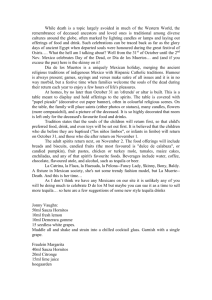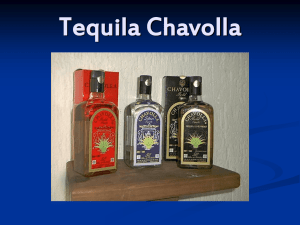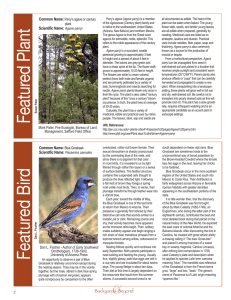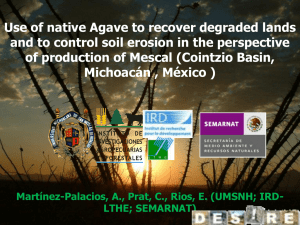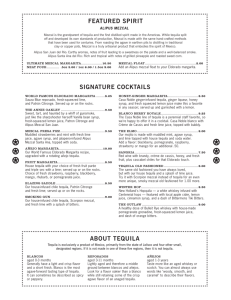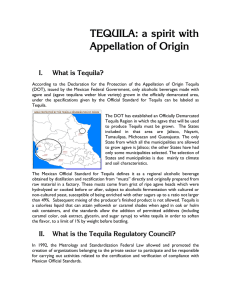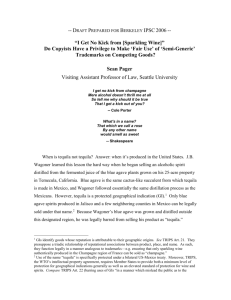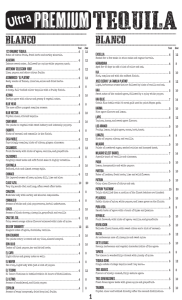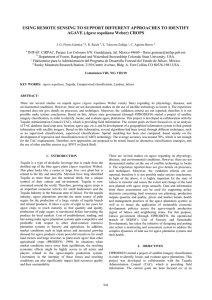Tequila - Maurice Wine Cru
advertisement
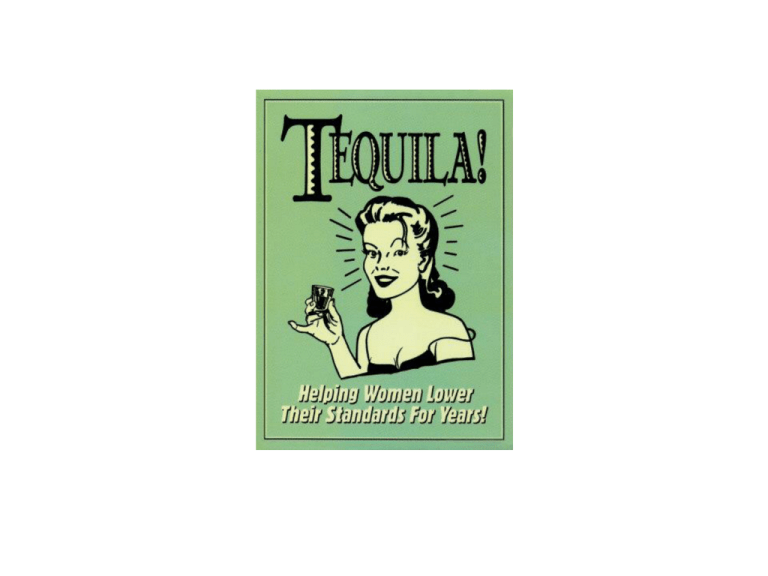
Definitions & History tequila (n): distilled, fermented agave hearts produced in Tequila, Jalisco, Mexico Timeline 1522 – Conquistadors invade Central America waging war on Aztecs & Incas. After their brandy runs out, they distill Aztec octli/pulque, making early tequila. c. 1600 – Mass-produced distilled pulque centralizes around Tequila, Jalisco where the best agave grows. 1608 – First tax on the new spirit! 1656 – City of Tequila officially founded. c. 1880 – Tequila exported to the United States 2000s – TMA (“tristeza y muerte de agave”) causes large-scale agave shortage. Prices skyrocket and never really come down (cp. oil). Must be fermented from Agave tequilana (Blue Weber agave) “Tequila” is an internationally protected name like “cognac” or “champagne” certifying origin & production method cp. Temequila from Temecula All tequila comes from 15 governmentt certified production facilities 100 distilleries produce 2000 brand names (cp. rum) After distillation, tequila is legally allowed to be exported in bulk and bottled by foreign companies Saves $ shipping, creates bottling jobs Must carry NOM: certification # of producer, distillery, year Geography Originally, tequila could only legally originate from Tequila, Jalisco Increased demand caused agave from surrounding states of Tamaulipas, Guanajuato, Michoacan & Nayarit to be allowed. Jalisco Derived from Aztec word for “sandy surface” Mountainous region with many valleys Tequila volcano erupted 200,000 years ago, leaving bed of volcanic soil now covered by sand. Sub-tropical climate 2 main regions Area around Tequila • • La Tierra Negra → volcanic soil Agave matures in ~ 7 years Los Altos de Jalisco • • La Tierra Roja → iron-rich soil Agave matures in 8-12 years Production & Styles Agave Cultivation Wild agave is a succulent plant that can grow 8 feet tall and can live up to 50 years. It reproduces by growing a shoot with flowers on the end up to 20 feet high. The flowers are then pollinated by a native bat, fertilizing thousands of seeds. The plant then dies. Tequila Production Commercial agave starts to grow its shoot after 5 years. The shoot is removed causing the heart or “piña” to grow larger, increasing the amount of sugar available for fermentation. “Jimadores” harvest the piña by hand. If harvested too soon, not enough sugar has been produced. If too late, the sugars have already been used to grow the shoot. Piñas are crushed to release the “musto” (cp. grape must) which is then fermented in oak or stainless steel and distilled 2-3 times. Tequila is then aged in oak (or not) Styles Mixtos – 51% agave sugar by law; remaining 49% is made up of cheap glucose & fructose from any source. Puro de agave – made from 100% agave sugars Blanco / Plata – “white” / “silver” Aged 0-2 months Joven – “young” Blended Blanco with Reposado or Añejo Reposado – “rested” Aged 2-12 months in oak Large oak barrels used (up to 20,000L) Añejo – “mature, aged” Aged 1-3 years in oak Small oak barrels used (up to 600L) Extra Añejo Aged more than 3 years in oak New designation as of 2006
